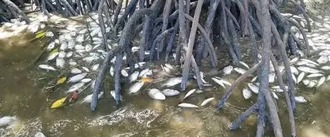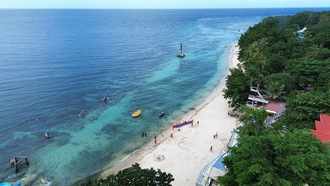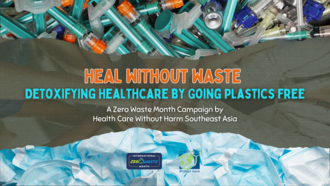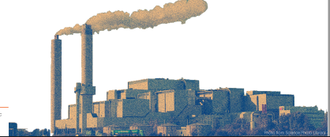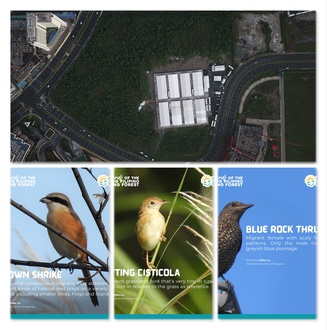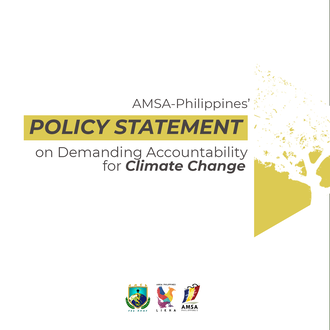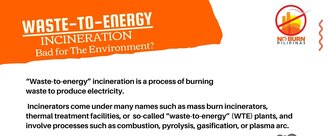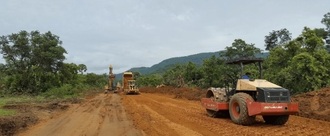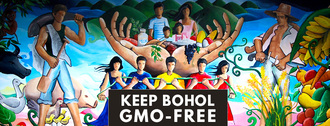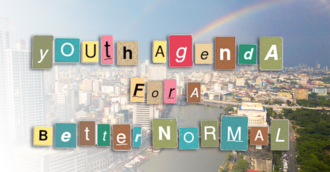-
For the Future of Bais City, Manjuyod, and Tañon Strait — Support the Filing of a Writ of KalikasanFor generations, the rivers and coasts of Bais City and Manjuyod have given life to our people—from fisherfolk who rise before dawn to families who depend on clean water for food and health. These same waters flow into the Tañon Strait Protected Seascape, home to dolphins, coral reefs, and the famous Manjuyod Sandbar that draws visitors and supports local tourism and employment. Today, that lifeline is threatened. The recent wastewater contamination has clouded not only our seas but also our sense of safety and trust. Fisherfolk worry about their catch; workers and small business owners fear for tourism’s future. Communities along the coast ask, "Will visitors still come if our waters are unsafe?" Filing a Writ of Kalikasan is our way to act—responsibly and lawfully—to protect both nature and livelihood. This is not about blame but about truth, accountability, and recovery. By standing together, we defend not just our seas but also the dignity and future of the people who depend on them.576 of 600 SignaturesCreated by Lloyd Dionson
-
SUPPORT INITAO - SAY NO to the Oil Depot and Pier Project.The importance of protecting areas like Initao from the development of industrial facilities such as an oil depot and pier can be understood from several critical perspectives: 1. Environmental Protection: The establishment of industrial sites, especially those related to fossil fuels, poses significant risks to local ecosystems. These risks include oil spills, air and water pollution, and habitat destruction, all of which can have devastating effects on wildlife and plant life. Preserving the natural habitats in Initao helps maintain biodiversity, which is essential for ecological balance and the health of the planet. 2. Marine Life Conservation: Coastal and marine ecosystems are some of the most productive and biologically diverse areas on Earth. Protecting these areas ensures the survival of numerous marine species, some of which may be endemic or threatened. Marine conservation efforts help sustain fish populations, protect coral reefs, and maintain the overall health of the oceans. 3. Sustainable Tourism: Initao's identity and economy are closely tied to its natural beauty and resources, which attract tourists seeking white sand beaches and unspoiled nature. Sustainable tourism can provide long-term economic benefits without degrading the environment, while industrialization could deter visitors, negatively impacting local businesses and livelihoods. 4. Community Health and Safety: Industrial facilities, particularly those dealing with oil, can be hazardous to nearby residents due to the potential for accidents, explosions, and exposure to toxic substances. Protecting the community from these risks is paramount to ensuring public health and safety. 5. Cultural and Heritage Preservation: Natural landscapes often hold cultural significance for local communities and indigenous peoples. Preserving these areas maintains the cultural heritage and allows future generations to experience and appreciate their ancestral lands. 6. Climate Change Mitigation: The protection of forests and seas plays a crucial role in mitigating climate change by sequestering carbon dioxide and serving as carbon sinks. Development that leads to deforestation or destruction of marine habitats can exacerbate climate change impacts. 7. Legacy for Future Generations: Preserving natural and unspoiled environments ensures that future generations can enjoy and benefit from them, just as present generations have. It is about leaving a legacy that values the long-term health of the planet over short-term industrial gains. In summary, opposing the development of the oil depot and pier in Initao is about safeguarding the environment, ensuring the well-being of the community, preserving the local economy, and maintaining a commitment to future generations. It is about choosing a path of sustainable development that respects the delicate balance between human activity and the natural world.174 of 200 SignaturesCreated by Muhammad Adel Roa
-
HCWH's Position Statement on the proposed bill establishing waste-to-energy technologiesThere is an urgent need for the health sector to rise up and support the fight against false solutions to plastic pollution. Global waste generation is set to double from 2015 to 2025, reaching over 6 million tonnes per day, with a projected increase to 11 million tonnes per day by the next century. In the Philippines, 362,000 metric tons of waste and 280 metric tons of medical waste are generated annually, posing challenges for proper waste management and segregation. Focusing on sustainable alternatives over disposal can reshape consumption habits and lead to better waste reduction outcomes. The Philippine Clean Air Act of 1999 clearly indicates the rights of Filipinos, including the right to breathe clean air, the right to utilize and enjoy all natural resources according to the principle of sustainable development, and the right to be informed of the nature and extent of the potential hazards of any activity. Incineration, also known as waste-to-energy, thermal treatment, energy-from-waste, and energy recovery, is not an effective solution to the waste management challenges and plastic pollution crisis. Beyond the health impacts and environmental degradation, false solutions, including WTE technology, do not effectively address waste disposal challenges and energy generation. Health Care Without Harm Southeast Asia, therefore, states our opposition to this bill. We are deeply concerned about the potential health and environmental risks associated with reintroducing incineration technologies, such as waste-to-energy facilities, for dealing with municipal waste, including medical and infectious waste. We urge for preventive measures to be taken, a just transition to be provided, and a precautionary approach to be supported in waste management.9 of 100 SignaturesCreated by Health Care Without Harm Southeast Asia

-
No to WTE incineration in Davao! Go for genuine zero waste solutions!1.) WTE incineration is known to cause health and environmental problems to surrounding communities. Burning municipal waste produces pollutants that persist in waterways, air, and surrounding farms for decades. The process creates dioxins and furans which are known to cause respiratory and reproductive diseases, birth defects, and cancer. WTE will not only harm the already marginalized low-income agricultural communities in Barangay Biao Escuela and surrounding barangays in District 1 and 3 of Davao City; its toxic by-products may reach our plates through the food chain. The proposed WTE site in Davao is located just 2.2 km from the elementary school, and 550m from a relocation site. Its impacts may also reach those living within and beyond the 10-km radius of the facility. Our fate may become similar to several cases of pollutant exposure in several parts of the world. For example, people in an urban area hosting two waste incinerators in Italy were found to have higher concentrations of metals barium, manganese, copper, and vanadium that have accumulated in their bodies (Di Ciaula et al., 2020). In Japan, children studying in schools near municipal waste incineration plants were reported to have experienced wheezing, headache, stomach ache, and fatigue (Miyake et al., 2005). Locally hired workers may also be exposed to toxins like those incineration plant workers in Shenzhen, China who were found to have high levels of phthalates and bisphenols (Lu et al., 2020). 2.) WTE worsens the climate crisis. Burning of waste releases greenhouse gas emissions. Even the European Union is defunding WTE incinerators with the realization that such facilities do not contribute to climate action. WTE also cannot be considered renewable energy because the feedstock will come from plastic waste, which are products of fossil fuel extraction. 3.) WTE is expensive, yet produces minimal energy compared to genuine renewable energy resources. Instead of reducing waste at source, it encourages production of more waste in order to feed the facility. The proposed WTE project of Davao City requires a minimum of 600 tons. At 30% residuals, Davao City wastes are only 180 tons per day: a shortfall of 420 tons. This produces minimal energy despite capital expenses reaching Php 5 billion. This will cause a huge drain on the city’s finances because of compensation obligations to the special purpose company. To make up for these arrangements, the public will shoulder the cost through payment of higher tipping fee. 4.) WTE threatens the job security of waste workers. WTE will displace workers in the formal and informal waste industry such as waste pickers, recyclers and haulers, as well as from the numerous companies and groups who upcycle, recycle and compost. 5.) WTE violates the Clean Air Act, Renewable Energy Act, and Ecological Solid Waste Management Act. The proposal also didn't undergo proper community consultation. As of writing, the project does not have an environmental compliance certificate (ECC), yet the land for the facility has already been bought by the city government of Davao. 6.) The Philippines has limited technical and financial capacity to regularly monitor emissions such as dioxin, furan, and other toxic WTE by-products. 7.) The technology proposed by Japanese contractor NSENGI is a grate stoker furnace-type, which is a relatively old waste treatment technology that is incapable of burning waste at a safe temperature. Solid by-products such as toxic ash cannot just be disposed in the municipal landfill since these are hazardous wastes. Thus, a new landfill will still be opened just for the hazardous ash from the incinerator. 8.) The establishment of WTE facilities will encourage Global North countries to dump their waste in the Philippines, a practice which still happens to this day. Davao can and should commit to genuine Zero Waste approaches and join the many other communities around the world who have committed and set Zero Waste targets. This can be done through supporting communities to properly implement the Ecological Solid Waste Management Act (RA 9003). For example, Barangay Potrero in Malabon was able to divert 80% of its solid waste from landfills through composting and recycling. This resulting in daily savings of Php 15,000 from hauling and tipping fees while generating 65 jobs. In the city of San Fernando, Pampanga, the implementation of Zero Waste has resulted to 80% waste diversion. They were also able to save Php 20 million in the process. We need not go far to find another model Zero Waste community. In Davao City's Purok Onse, Barangay Tacunan, the homeowners and the barangay, through the support of Sustainabe Davao Movement, were able to reduce the monthly volume of waste sent to the landfill by 3000 kgs, after only 7 months of implementing Zero Waste solutions such as scheduled collection of segregated waste, door-to-door collection of food waste, weekend recyclables deposit, and sari-sari store refilling stations. Still in Davao City, Barangay Mintal was able to divert an average of 2 tons of food waste per month and 6.7 tons of recyclables per month, through collecting segregated waste from food establishments and households, empowering resource collectors, and partnering with junk shops and a food upcycling company. The program also yields an average of Php 45,822 monthly income from sales of recyclable materials. We foresee that waste diversion will further improve if the LGU supports this kind of solid waste management program that is clearly safer, more productive, and more sustainable compared to incineration. These model communities in the Philippines show that Zero Waste is possible, without the polluting and costly presence of WTE incinerators.2,961 of 3,000 SignaturesCreated by No Burn Davao

-
Sagipin ang Ating Nayon!DOT, National Task Force Against Covid, and Enrique Razon of ICTSI want to make use of Nayong Pilipino Foundation urban park in Entertainment City in Parañaque for a proposed Mega Vaccination center. They say it is urgent and that the NPF board needs to sign an agreement as soon as possible. The NPF board is still waiting for detailed plans of the mega vaccination site, as it has raised concerns for the growing ecosystem in the urban park. The NPF board also raises legal concerns about the involvement of a private entity - ICTSI Enrique Razon. What is the need for the NPF urban park and green open space, when there are other existing spaces for inoculation? Since vaccination is urgent, it is more efficient to use existing structures to administer vaccination in Metro Manila. Coliseums, universities, and parking lots are excellent venues for vaccine drives. Contrary to what the DOT and ICTSI have been saying, the NPF land is not a vacant lot but has a thriving green space that hosts a variety of urban wildlife and is the last remaining grassland in the reclaimed area of Parañaque. The site is a bird flyway network and is close to the Las Piñas-Parañaque Critical Habitat and Ecotourism Area or protected wetlands under the Ramsar Convention, to which the Philippines is a signatory. See wildlife of NPF urban park here: http://nayongpilipino.gov.ph/the-birds-of-nayong-pilipino-healing-forest/ The cutting of almost 500 trees and other site works would "kill the existing ecosystem. Once lost, it could take decades to recover this ecosystem. A mega-vaccination facility that will destroy this ecosystem would be a disaster and a disservice to the residents of Metro Manila who need more green and open spaces. Our alliance is seeking transparency on the need for such a development. We also ask for Ground activities not to take place until a MOA between NPF and a government entity has been completed, and not between ICTSI. The MOA must specifically say that it is only a temporary facility that must be removed after the proposed 300 days. The MOA must also state that the ecosystem is considered in the design, and the size should just be proportionate to the needs of the facility. Private Entities Cannot Use Government Land The Nayong Pilipino Creative and Cultural Hub is owned by the Nayong Pilipino Foundation, a Government-Owned and Controlled Corporation under the Department of Tourism. It has its own charter and mandate. There is no official, written agreement between the NPF, DOT, IATF, and any private entity regarding its conversion into a mega-vaccine facility. The legality of this conversion must be reviewed against Presidential Decree No. 1445 the Government Auditing Code of the Philippines so as to ensure that this public property will not be land-grabbed. Even Architect and Urban Planner Felino “Jun” A. Palafox of Palafox Associates, was engaged by ICTSI Foundation to design the proposed mega-vaccination center. Palafox has voiced his reservations on the construction of a Mega-Vaccination facility at the NPF Creative and Cultural Hub because: 1.) The land cannot handle medical waste and 2.) It would require the removal of more than 450 trees onsite. We must save the Nayong Pilipino Creative and Cultural Hub as an urban, green, and open space. This is not about choosing trees over people's lives. People need trees to thrive, not the other way around. Metro Manila needs more green spaces. And if we truly want to end the pandemic, biodiversity matters now more than ever.577 of 600 SignaturesCreated by Alyansa ng Bagong Nayon Natin

-
Demanding Accountability for Climate ChangeIntroduction: In the face of a pandemic, climate change remains to be one of the defining issues of our time. Some of the impacts already evident in the Philippines include decreased water availability, extreme heat, and stronger, more frequent typhoons. The series of typhoons that recently hit the country and the destruction that it left behind verifies the authenticity of climate change. The Philippines is the most vulnerable to climate-related events. Unfortunately, the present pandemic has only managed to further cripple the health sector and expose the discrepancies of the nation’s response. Climate change significantly affects the environment, economy, and healthcare system of the country. It disproportionately affects vulnerable populations (elderly, children, indigenous communities, women, and coastal populations) and low-income and middle-income countries, leaving them victims of climate emergencies and placing the burden of disease on those least responsible. Maintaining vigilance about this issue allows communities to take action on attainable goals and preempt future difficulties that this country has yet to confront. AMSA Philippines’ Position As a national organization that places health at its forefront, the Asian Medical Students’ Association - Philippines believes that it is time to declare a climate emergency follow-up on the climate change framework following the recent declaration of Climate Emergency by the Congress. Climate change is not only bounded by the ruination caused by extreme climate events. The extent of human contribution to its modernization and aggravation should also be scrutinized. In actuality, various repercussions also need to be factored in such as the loss of livelihood, the dramatic increase in mental health problems, and a shortage of basic needs such as food and water. This statement is to address the insufficient measures that the government is implementing to build a more disaster-resilient country and its enforcement in imposing stricter environmental regulations to major climate change contributors in this country. Furthermore, other stakeholders are called to further engage themselves to this aim. Currently, it appears that the national government — which are responsible for implementing policies, mobilizing efforts, and exhibiting strength through its dedication to climate policy and institutional reform agenda on climate change adaptation, mitigation, and disaster risk reduction (CCAM-DRR), does not fully understand the importance of anthropogenic accelerated climate change and how much it gravely impacts us. Climate change goes beyond extreme climate events (ECEs). Climate change, together with processes like urbanization and environmental degradation have impacts on food and nutrition security, agriculture, community-based disaster risk reduction, mental health and so much more. The environment is continuously threatened, primarily by the actions of big corporations that exploit our natural resources. It is imperative that the absence of specific measures to establish resilience to the effects of climate change be addressed and mitigate its causes to overcome the challenges of dealing with the macroprudential deficits, restoring growth, minimizing poverty. A partnership with the private and public sectors is necessary to understand the risk that requires considering not just climate change, but also current and future vulnerability and exposure. According to a report by the World Input-Output Database stated in the Healthcare Climate Footprint 2019, the healthcare sector is one of the industries that contribute to carbon emissions and plastic wastes. Healthcare’s operational emissions produce 4.4% of the total climate footprint. The healthcare sector has a vital role in protecting the health and wellbeing of populations from the impacts of climate change. Leadership, guidance, and regulatory roles from healthcare professionals have great significance with regards to health-determining factors, such as emergency planning, and recuperation in the aftermath. Therefore, as future health professionals, it is our responsibility to understand that the mechanism of the adverse effects of climate change has both direct and indirect impacts on the communities around us. Direct consequences being deaths, injuries, psychological effects, and various diseases. While the indirect consequences of disasters not only refer to the loss of primary health care, living conditions, limited or no access to administration, but also damages to health care systems regarding external infrastructure such as the provision of water and/or electricity. As evidence shows the impact of climate change, there is a need for collaboration between all stakeholders in the country, and all must work together efficiently and synergistically to save lives. We must first start by calling to action the local government units and the national government, and by working with NGOs and academic institutions to refrain from band-aid solutions and shift the climate change response into a multisectoral approach and adapt the health in all policy. This would require all stakeholders to work in a coordinated manner, in a single climate change strategy and coordinating mechanism. Lastly, the curricula of institutions at all levels, particularly in medical education, should include the health effects of climate change such as malnutrition, threats to mental health, increased respiratory and cardiovascular diseases, and infections caused by food, water, and vector-borne diseases.146 of 200 SignaturesCreated by AMSA- Philippines
-
It’s Time to Reveal, Reduce, and Redesign for Lazada and Shopee!The E-Commerce industry has been growing at an exponential rate, projected to be worth more than $300 Billion by 2025. In the Philippines, the industry grew last 2018 by as much as 31%, outpacing the global growth rate of 21%. This is apparent in the huge popularity of e-shopping platforms such as Lazada and Shopee, where we have come to expect to have big monthly sales. Once our orders reach our doorsteps, however, we are also confronted with another problem: unnecessary plastic packaging waste. It takes an average of just 12 minutes for plastic packaging to transfer from consumer hands to the trash bin. This problem is exacerbated when we look at the plastic waste we produce annually. Each person contributes around 12.4kg of packaging waste, most of which end up in landfills and left to decompose slowly for hundreds of years. This problem is only magnified because of the current COVID-19 pandemic, where plastic waste is projected to increase by as much as 300%. As much as consumers are responsible for waste disposal, so too are corporations accountable for the plastic they end up producing, especially unnecessary plastic packaging. Sellers themselves have noted this and are doing reduction and reuse strategies on their own initiative. One doesn’t need to look further, our own parents have always reused plastic packaging as a cost-saving technique, and as a waste reduction method! If consumers and sellers are already doing their share for a healthier planet, why can’t corporations take on the same responsibility and accountability? We’re calling the largest E-Commerce Companies in the Philippines, Lazada and Shopee, to be part of the #BetterNormal.20,687 of 25,000 SignaturesCreated by Youth Strike 4 Climate Philippines
-
Scrap Waste-to-Energy BillWaste incineration can not solve the waste management problem of the country neither it can provide clean, safe and affordable energy for electric consumers. The reality is opposite. It will only encourage generation of more waste because it will undermine the proper waste management practices such as reusing, repurposing and recycling. It also runs contrary to our aspirational goal of keeping the temperature rise of climate to 1.5 degrees because waste incineration especially plastic waste produces significant greenhouse gas emissions. Finally, it will only convert ordinary wastes to poisonous residues and fumes and persistent organic pollutants including dioxins and furans enough to cause serious health problems such as cancers and will affect future generations.855 of 1,000 SignaturesCreated by Green Thumb Coalition

-
LGU ng Infanta, Quezon Laban sa konstraksyon ng kaliwa dam."ANG BUHÁY NA SIERRA MADRE AY BUHAY NATING LAHAT" ...kung mamamatay ang Sierra Madre, mamatay din tayo... KAMI, na sang-ayon at kusang loob na lumagda dito, ay binubuo ng iba't ibang mga may taya mula sa hanay ng mga CSO's, Academe, Batayang sektor, Interfaith-based groups, Katutubo, Pribadong sektor, Negosyante, at Youth group dito sa bayan ng Infanta, ay kaisa at sumusuporta sa di matitinag na pagtutol sa panukalang pagtatayo ng Kaliwa Dam ipinahayag sa pamamagitan ng mga Resolusyon at Ordinansa ng di pagsang-ayon sa proyekto ng bayang ito. DAHIL DITO, kami ay magalang na humihiling na manindigan ang local na Pamahalaang Bayan ng Infanta sa pagiging pangunahing tatayo bilang "complainant" sa mga isasampang kasong may kaugnayan sa iba't-ibang paglabag sa planong pagtatayo ng Kaliwa Dam. SAPAGKAT, ang Kaliwa Dam, na isa sa mga proyekto sa ilalim ng "Build, Build, Build" program ng Pamahalaang Nasyunal at itatayo sa loob ng Protected Area ng PP 1636 at sakop din ng Lupaing Ninuno ng mga Dumagat-Remontado ay makakasira sa mayamang samu't-saring buhay. SAPAGKAT, sang-ayon sa mga dalubhasa at syensya, ang epekto ng dambuhalang dam ay mahigpit na kaugnay sa labis na pag-init ng mundo at pabago-bagong klima. "Baha sa panahon ng tag-ulan at tagtuyot naman sa panahon ng tag-init;" SAPAGKAT, ang epekto nito ay hindi lamang mararanasan ng mga pamayanang nakapalibot malapit sa itatayong dam kundi gayudin sa milyon-milyong mamamayan sa ibabang bahagi nito at posibleng makasira ng mga ari-arian, mga sakahan at mismong buhay ng tao, gaya ng naranasang delubyo noong November 29, 2004 dito sa Real-Infanta-Nakar (ReINa); SAPAGKAT, hindi naman nagmumula sa dambuhalang dam ang suplay ng tubig, kundi sa mayamang kagubatan at malusog na watershed. Hindi matutumbasan ng perang kikitain sa pagtatayo ng Dam ang mga serbisyong ekolohikal (ecological services) na ibinibigay ng Sierra Madre, tulad ng malinis na tubig at hangin, mga produktong-gubat, halamang gamot, mga hayop, isda sa kailugan at halaman na pinagkukunan ng ikinabubuhay ng mga upland communities, lalo na ng mga katutubo; SAPAGKAT, naniniwala tayo na "ANG BUHÁY NA SIERRA MADRE AY BUHAY NATING LAHAT"...at kung mamamatay ang Sierra Madre dahil sa planong itayong Kaliwa Dam, mamatay din tayo...; SAPAGKAT, ang MWSS na siyang project proponent, kasama ang iba pang ahensyang katuwang nito ay marami nang nagawang paglabag, iregularidad sa proseso ng pagkuha ng pagpayag sa komunidad at walang local permits para simulan ang kontruksyon ng access road. KUNG KAYA'T kami po ay magalang na humuhiling sa Punong Bayan, Miyembro ng Sangguniang Bayan at Municipal Development Council, na maging isa sa mga pangunahing tatayong "complainants" ang lokal na Pamahalaan ng Infanta sa mga kasong isasampa kaugnay sa mga paglabag ng mga sangkot na ahensya sa planong itatayong Kaliwa Dam.179 of 200 SignaturesCreated by JOHN LORENZE VALENZUELA

-
STOP AND INVESTIGATE DUMPING OF CRUSHED DOLOMITE IN MANILA BAYIn defiance of the Supreme Court MMDA Ruling (https://lawphil.net/judjuris/juri2008/dec2008/gr_171947_2008.html) and even Administrative Order No. 16, (2019) ‘Expediting The Rehabilitation And Restoration Of The Coastal And Marine Ecosystem Of The Manila Bay And Creating The Manila Bay Task Force’, this ill-conceived project violates at least five laws that impact heavily on our fisheries, biodiversity, and marine habitats,: 1. Environmental Impact System Laws and regulations No person may undertake environmentally critical projects or any project in environmentally critical areas without an environmental compliance certificate. Major reclamation projects and resource extractive industries such as major mining and quarrying projects are environmentally critical projects. Presidential Proclamation No. 2146 includes the following as environmentally critical areas: *All areas declared by law as national parks, watershed reserves, wildlife preserves and sanctuaries *Areas which constitute the habitat for any endangered or threatened species of indigenous Philippine Wildlife (flora and fauna); *Areas of unique historic, archaeological, or scientific interests; and *Areas frequently visited and/or hard-hit by natural calamities geologic hazards, floods, typhoons, volcanic activity, etc. 2. The Fisheries Code (RA 8550) as amended by RA 10654 The Fisheries Code requires a detailed Environmental Impact Statement prior to undertaking projects which “will affect the quality of the environment.” (section 12) It also prohibits aquatic pollution defined as anything introduced to water bodies that can harm living and non-living marine resources or humans. 3. The Clean Water Act, RA 9275 The Clean Water Act prohibits depositing of any material into bodies of water or their margins that cause water pollution 4. The National Cultural Heritage Act of 2009, RA 10066 The National Historical Commission declared Manila Bay, from Del Pan Bridge to the Cultural Center of the Philippines, as a national historical landmark in 2012. The law prohibits alteration of its original features: Prohibited Acts. - To the extent that the offense is not punishable by a higher punishment under another provision of law, violations of this Act may be made by whoever intentionally: Xxx (b)Modifies, alters, or destroys the original features of or undertakes construction or real estate development in any national shrine, monument, landmark and other historic edifices and structures, declared, classified, and marked by the National Historical Institute as such, without the prior written permission from the Commission. This includes the designated security or buffer zone, extending five (5) meters from the visible perimeter of the monument or site. At the local level, the project proponent is also required to consult the local government unit. 5. The Local Government Code of 1991, RA 7160 National agencies planning or implementing projects, such as the Department of Environment, must consult the stakeholders of the local government unit, in this case, the City of Manila. The project cannot proceed without consultation with and prior approval of the Sangguniang Panglungsod of Manila. Likewise, New Civil Code of the Philippines, RA 386, declares that: *Article 5. Acts executed against the provisions of mandatory or prohibitory laws shall be void, except when the law itself authorizes their validity. (4a) *Article 7. Laws are repealed only by subsequent ones, and their violation or non-observance shall not be excused by disuse, or custom or practice to the contrary. When the courts declared a law to be inconsistent with the Constitution, the former shall be void and the latter shall govern. Administrative or executive acts, orders and regulations shall be valid only when they are not contrary to the laws or the Constitution. (5a) *Article 25. Thoughtless extravagance in expenses for pleasure or display during a period of acute public want or emergency may be stopped by order of the courts at the instance of any government or private charitable institution. Jurisprudence Aside from the laws, the MMDA, et al. v. Concerned Residents of Manila Bay Ruling directly applies in this case. Here, the Supreme Court noted that “the cleanup and/or restoration of the Manila Bay is only an aspect and the initial stage of the long-term solution. The preservation of the water quality of the bay after the rehabilitation process is as important as the cleaning phase.“ Because of this, the Court has put the heads of all concerned departments-agencies, bureaus and offices under them on continuing notice about, and to enjoin them to perform, their mandates and duties towards cleaning up the Manila Bay and preserving the quality of its water to the ideal level. Hence, the acts of DENR and DPWH as well as its bureaus in dumping dolomite rocks as ‘white sands’ which are in fact pollutants, are in direct contravention of their continuing and mandated duties in the said case. In addition, relying on Section 65 of RA 8550, as amended, the Department of Agriculture (DA) through the Bureau of Fisheries and Aquatic Resources (BFAR) was ordered by the Supreme Court to improve and restore the marine life of the Manila Bay in the said case.825 of 1,000 SignaturesCreated by Living Laudato Si' Philippines

-
Keep Bohol GMO-FreeIn our continued tracking of any GMO-permeation in Bohol, we are deeply alarmed and concerned by recent pronouncements from the top leadership of the provincial government of Bohol and the regional office of the Department of Agriculture in openly supporting and promoting GM crops, and laying out plans of establishing plantations, specifically of BT corn and golden rice, in Bohol – which, if deemed constituent to prohibited acts in Bohol’s GMO-Free Ordinance that include the rather unfortunately broad-phrased “any activity whatsoever for the propagation of or experimentation related to GMOs” in the province – if not directly violative of said ordinance, at the very least, desecrates the very intent of Bohol’s GMO-Free ordinance, that is, to protect and ensure the health of both our people and the environment from the negative threats and impacts of GMO cultivation. The Province of Bohol has clear policies in safeguarding the health of its people and ensuring the conservation and sustainable management of its environment. And with lessons learned from the COVID-19 pandemic crisis, the urgent need to intensify Bohol’s agenda for food self-sufficiency, food security and nutrition must veer from grandiose industrialist agriculture solutions and should be oriented towards the development of resilient, sustainable and equitable food systems that are attuned to the local context, culture, and natural biodiversity. Bohol’s food revolution will be ultimately Bol-anon, and it will be GMO-free. ABOUT BOHOL's GMO-FREE POLICY In 2003, through the combined efforts of grassroots stakeholders, civil society, non-government organizations, and the provincial government of Bohol, the province of Bohol, with the passage of Sanggunian Panlalawigan (SP) Resolution No. 2003-235, declared itself GMO-Free or free from genetically-engineered or modified organisms (GMO), or products of genetic engineering or genetic manipulation of an organism’s genome using modern biotechnology to produce transgenic plants, animals and micro-organisms with novel traits. To further safeguard the health of Boholanos and protect the ecological integrity of Bohol from the possible disastrous ill-effects of genetically modified organisms, the SP resolution was cemented with the enforcement, shortly thereafter, of Provincial Ordinance No. 2003-010 or “The Safeguard Against GMOs”, which decrees that “no person shall conduct any laboratory or field-testing or any activity whatsoever for the propagation of or experimentation related to GMOs of any plant, animal, or microorganism in any area within the territorial jurisdiction within the Province of Bohol”. This legal instrument, along with our sustained monitoring and proactive thwarting of attempts at introducing and allowing the growing of genetically modified (GM) crops in our province, remains a landmark achievement for Bohol, oft- cited and benchmarked by other local government units (LGUs) in their bid to prevent the introduction of GMO production in their towns and provinces.238 of 300 SignaturesCreated by Bohol Eco Alliance

-
Thank You, Next!: Filipino Youth Hold The Key For A #BetterNormalYoung people defy the normal because normal was the problem. We are going to inherit the present; we are the future. The youth agenda is centered primarily on the young Filipino People, and none of the youth wanted the world to return to pre-coronavirus normal where we see how broken our society is. We see COVID-19 as an opportunity to address the current socio-economic, political and environmental issues revealed to us by the pandemic, we are now finding ways to reimagine and ratify a new world where leaders are ideal servants in words and actions. The Filipino youth wants a better normal and we will break the status quo. #BetterNormalYouthAgenda #AmbagNgKabataan1,781 of 2,000 SignaturesCreated by Youth Strike 4 Climate Philippines

